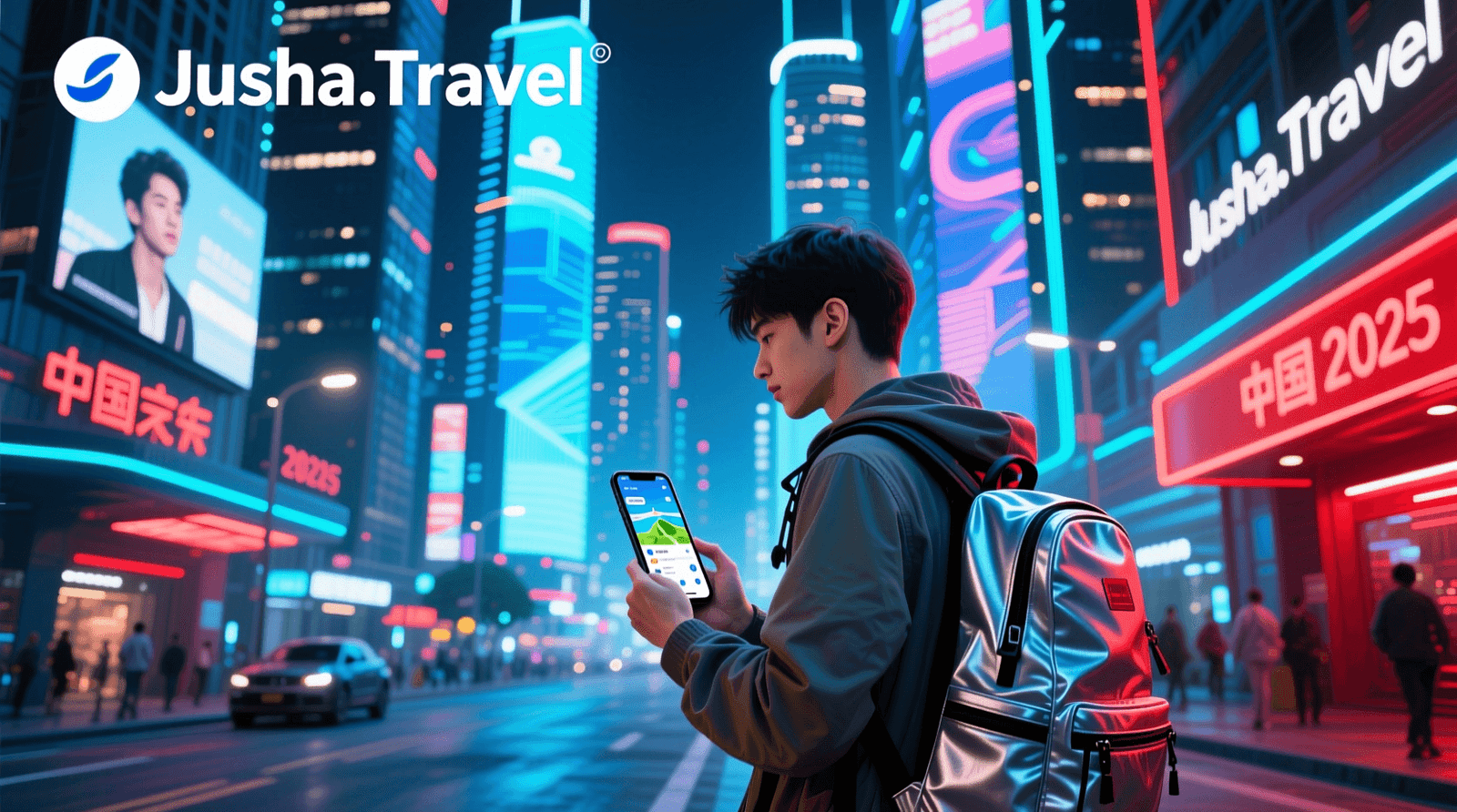“`html
Top 5 Tech Innovations in China to See in 2025
China’s rapid technological evolution is reshaping the world, blending ancient heritage with futuristic advancements that make it a must-visit destination for tech enthusiasts and travelers alike. From seamless high-speed trains crisscrossing vast landscapes to AI-driven smart cities, the country’s innovations are not just impressive—they’re integral to everyday life and culture. As a traveler, experiencing these developments firsthand offers a unique lens into China’s dynamic blend of tradition and progress, whether you’re zipping through cities or exploring ancient sites by electric ride. Here at jusha.travel, we love sharing tips to make your China journey unforgettable, so let’s dive into the top five tech innovations you should see in 2025. These aren’t just gadgets; they’re woven into the fabric of Chinese society, from bustling street food markets in Shanghai to serene tea houses in Hangzhou.
1. The High-Speed Rail Network: China’s Engineering Marvel
China’s high-speed rail (HSR) system is a testament to ambitious infrastructure, boasting the world’s longest network at over 45,000 kilometers by 2025, connecting megacities like Beijing and Shanghai in hours. Launched in 2008, the HSR has revolutionized travel, shrinking distances in a country as vast as Europe. Riders zip at up to 350 km/h on sleek bullet trains (gāotiě), where onboard Wi-Fi and gourmet meals turn journeys into luxurious experiences. For travelers, this means efficient access to rural tea plantations or urban tech hubs without the hassle of flights.
Practical tip: Hop the Beijing-Shanghai line for a 4.5-hour scenic ride through the Yellow River Valley—book via Trip.com for discounts. Culturally, HSR embodies China’s “infrastructure diplomacy,” with stations like Hangzhou East featuring traditional motifs. Fun fact: The network uses AI for predictive maintenance, ensuring 99.9% punctuality. In 2025, expect expansions to Tibet, enhancing eco-tourism. Tie this into your itinerary with a stop in Suzhou for classical gardens— a perfect blend of speed and serenity.
As China aims to electrify more lines, HSR reduces carbon footprints, aligning with sustainable travel. For a deeper dive, explore our guide to high-speed rail travel, complete with ticket hacks and scenic routes.
2. Mobile Payment Systems: The Cashless Revolution
China’s mobile payment ecosystem, dominated by Alipay and WeChat Pay, has created a nearly cashless society where 90% of transactions are digital. By 2025, over 1 billion users will scan QR codes to pay for everything from street-side dumplings to high-speed rail tickets, with facial recognition speeding up at cafes in Beijing or night markets in Chengdu. This innovation, pioneered by Alibaba, has leapfrogged traditional banking, making even rural vendors tech-savvy.
For visitors, it’s a game-changer: Link a foreign card to WeChat Pay for seamless payments—no need for cash amid haggling for silk scarves in Shanghai’s markets. The cultural insight? It reflects China’s collectivist ethos, where shared digital wallets foster group meals. Fun fact: During 2025’s Spring Festival, Alipay’s red envelopes (hongbao) will see billions exchanged, blending tech with traditions like family reunions over hot pot.
Tip: Download Alipay’s international version before arrival; it integrates with high-speed rail apps for ticketless travel. In Shenzhen, witness this in action at Huaqiangbei’s electronics bazaar, where vendors use it for bartering gadgets. For foodies, use it to sample regional specialties like Mapo Tofu in Sichuan. This system not only streamlines your journey but also immerses you in China’s digital pulse.
3. Smart City Initiatives: Urban Living Redefined
Hangzhou’s “City Brain,” powered by Alibaba’s AI, exemplifies China’s smart cities, using big data to optimize traffic, lighting, and even emergency responses—reducing commute times by 15%. By 2025, over 500 cities will adopt similar systems, integrating IoT for everything from smart waste sorting in Beijing to flood prediction in Guangzhou. These initiatives reflect China’s vision of harmonious urban life, blending tech with cultural elements like ancient garden designs in smart parks.
Travelers can experience this in Shenzhen’s Nanshan District, where facial recognition unlocks park gates or orders shared bikes. Cultural insight: Smart cities honor feng shui principles, with apps suggesting harmonious routes near historic sites like the Forbidden City. Fun fact: In 2025, Hangzhou will host the Asian Games, showcasing AI traffic that adapts to crowds in real-time, easing navigation for festival-goers.
Tip: Visit during off-peak seasons to explore smart features without crowds; use the city’s app for AR overlays on landmarks like West Lake. For eco-conscious travelers, note how these systems reduce emissions—perfect for low-impact tours. Combine with a visit to a traditional tea house in Hangzhou for a cultural-tech fusion.
4. Electric Vehicles and Ride-Hailing: Green Mobility on the Go
China leads global EV adoption, with over 50% of new car sales electric by 2025, thanks to giants like BYD and NIO. Ride-hailing apps like Didi integrate EVs, offering affordable, low-emission rides that zip through smog-free Beijing or Shenzhen’s tech corridors. This shift supports China’s carbon neutrality pledge by 2060, with charging stations dotting highways and cities.
For travelers, Didi’s seamless app (English version available) makes exploring effortless—hail an EV for a ride to the Terracotta Warriors in Xi’an, or opt for shared bikes in Shanghai. Cultural insight: EVs align with Taoist harmony, promoting sustainable harmony with nature. Fun fact: In 2025, autonomous Didi vehicles will pilot in Shenzhen, allowing hands-free sightseeing near Huaqiangbei’s gadget markets.
Tip: Rent an NIO from urban hubs for scenic drives, like from Beijing to the Great Wall—charge via the app’s network. For food lovers, use Didi to reach hole-in-the-wall spots for Peking Duck. This innovation enhances safety and efficiency, making your journey greener and smoother.
5. AI and Robotics: Everyday Magic in Chinese Life
China’s AI prowess is evident in robotics and applications that touch daily routines, from Baidu’s Apollo self-driving cars navigating Shanghai streets to Alibaba’s AI for personalized shopping in Hangzhou’s markets. By 2025, AI will power 80% of urban surveillance for safety, while robots in factories like Foxconn produce iPhones with precision. In culture, AI enhances experiences, like virtual guides at the Forbidden City or chatbots recommending regional cuisines.
For visitors, try facial recognition at airports for instant e-visas or AI translators for haggling in Beijing’s silk markets. Cultural insight: AI embodies Confucian balance, optimizing life without disrupting harmony. Fun fact: During 2025’s Mid-Autumn Festival, AI lanterns in Shanghai will sync with moon phases, blending tech with lunar traditions.
Tip: Visit Shenzhen’s AI museums for interactive exhibits; pair with a tour of Alibaba’s campus in Hangzhou. For travelers interested in tech’s cultural side, note how AI aids conservation, like monitoring pandas in Chengdu via drones.
Conclusion
China’s tech innovations in 2025 are more than marvels—they’re bridges between tradition and tomorrow, enhancing travel from high-speed rails to AI-guided explorations. Whether paying via mobile in a bustling night market or riding an EV through ancient hutongs, these advancements make your journey efficient and immersive. At jusha.travel, we’re passionate about guiding you through this fusion of old and new.
What’s your favorite Chinese tech marvel, or which innovation excites you most for your travels? Share your thoughts in the comments below, visit jusha.travel for more China travel inspiration, or explore related articles like our guide to high-speed rail or smart cities in China. Your adventure awaits—book your trip today!
(Word count: 1,156)
“`




